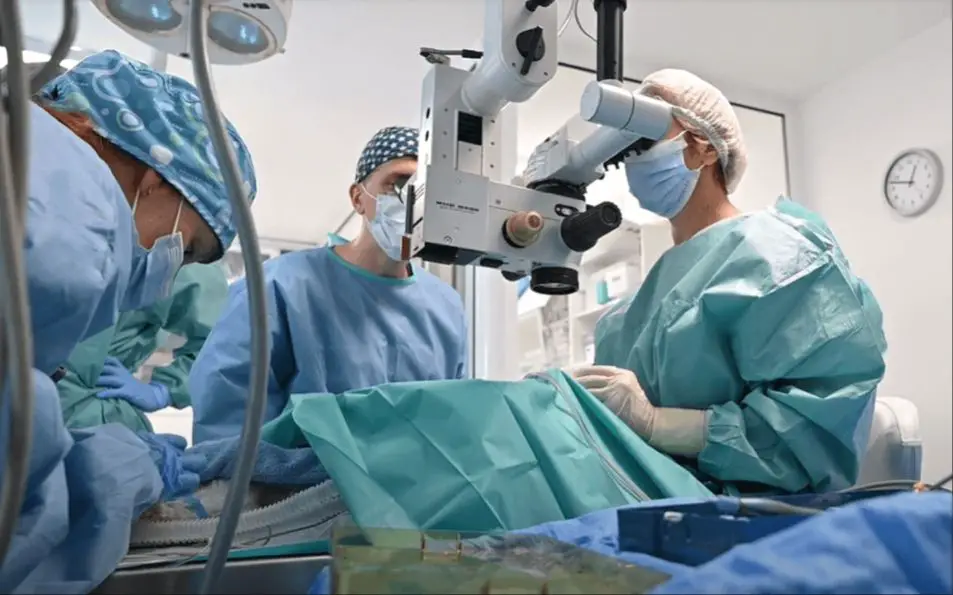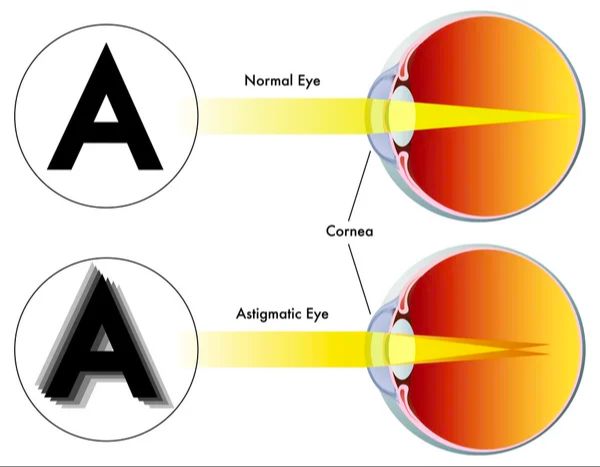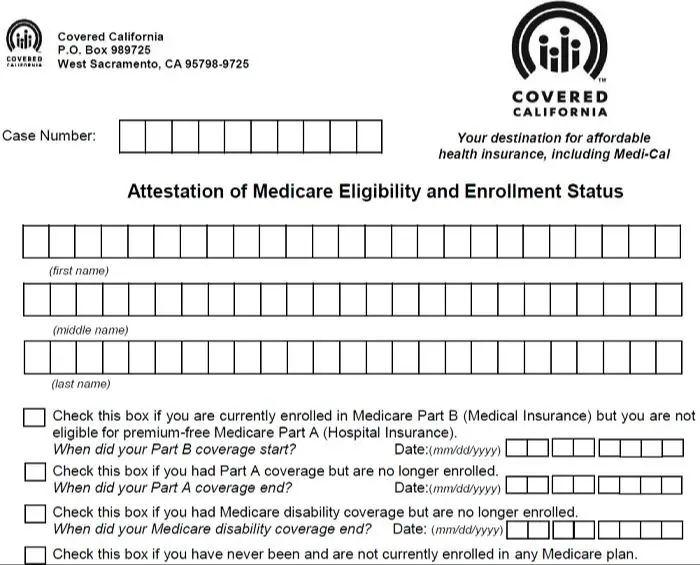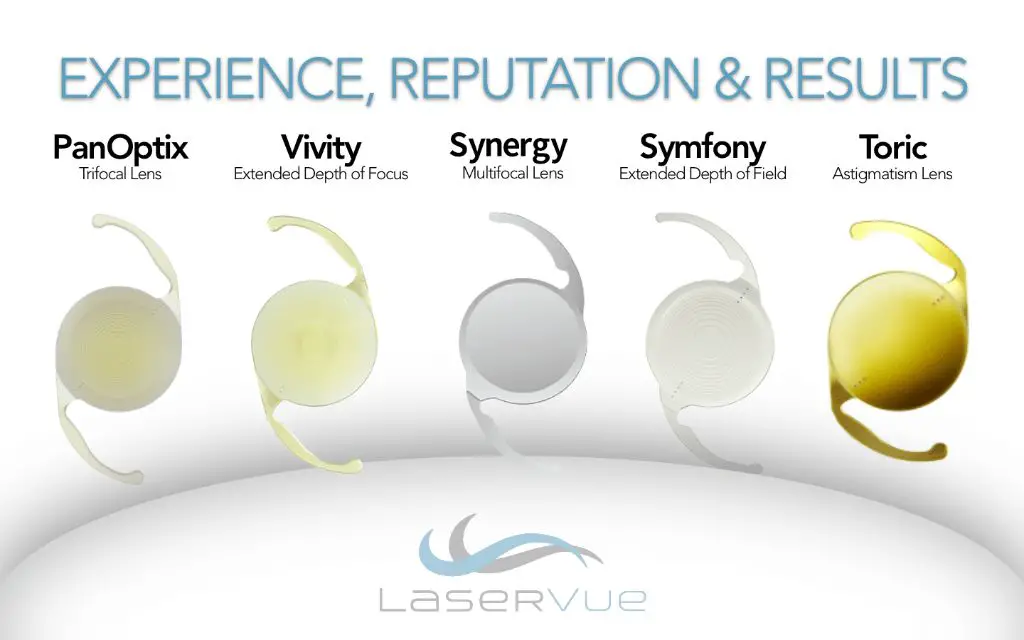Cataracts are a common eye condition associated with aging where the lens of the eye becomes progressively cloudy, resulting in blurred vision. As cataracts worsen, surgery is often required to remove the cloudy natural lens and replace it with an artificial intraocular lens to restore vision. Multifocal lenses are a type of premium intraocular lens that can correct both distance and near vision after cataract surgery.
This article provides an overview of cataracts and multifocal lens options for cataract surgery, including whether Medicare covers the cost of premium multifocal replacement lenses.
What Are Cataracts?
Cataracts are a condition that affects the lens of the eye. The lens is normally clear, allowing light to pass through and focus on the retina to produce a sharp image. With cataracts, the lens becomes progressively cloudy and opaque. This blocks some of the light from reaching the retina, causing blurry or impaired vision (Cataracts).
As cataracts develop, they often start small and may only affect certain areas of the lens. Over time, the cloudy areas enlarge and spread, blocking more light. Cataracts typically develop slowly and painlessly, and may affect one or both eyes (What Are Cataracts?).
There are several types of cataracts, classified by where and how they form in the lens. The most common are nuclear, cortical, and posterior subcapsular cataracts. As cataracts progress, they can eventually interfere with daily activities like reading, driving, and recognizing faces.
Cataract Surgery

Cataract surgery is a procedure to remove the natural lens of the eye that has developed an opacification, or cataract, and replace it with an artificial lens to restore vision. It is one of the most common operations performed today. During cataract surgery, the surgeon will make a tiny incision in the eye to gain access to the lens. Then he or she will use an ultrasound device to break up the existing lens, and suction out the fragments. Once the natural lens has been completely removed, the surgeon will implant an artificial intraocular lens inside the empty lens capsule. https://skylinevisionclinic.com/cataracts/cataract-surgery-what-to-expect/
The cataract surgery process involves removing the cloudy natural lens and replacing it with a clear artificial lens implant called an IOL (intraocular lens). The surgery typically takes less than 30 minutes and is performed on an outpatient basis. Patients are usually able to go home the same day. Before surgery, the ophthalmologist will dilate the pupil and apply anesthetic drops to numb the eye. During surgery, patients lie down and are awake but sedated. They feel little or no discomfort. The surgeon makes a tiny incision in the eye and uses a thin ultrasound probe to break up the lens so it can be suctioned out. Once the old lens is removed, the surgeon folds the artificial lens and inserts it into the empty capsule. https://www.opticalexpress.co.uk/cataract-surgery/cataract-surgery-process After surgery, patients usually notice improved vision within a few days. Complete healing takes about 6 weeks.
Types of Replacement Lenses
There are several types of artificial lenses or intraocular lenses (IOLs) that can be implanted during cataract surgery. The three main types include:
1. Monofocal lenses
Monofocal lenses provide sharp vision at one distance, usually for far away. This is typically set for somewhere between 20 feet and infinity [1]. These lenses do not correct astigmatism or presbyopia (age-related near vision loss), so reading glasses are usually still required after surgery. Monofocal lenses provide excellent far and intermediate distance vision but require the use of glasses for near vision tasks.
2. Multifocal lenses
Multifocal IOLs are designed to allow clear vision at multiple distances – near, far and intermediate. This is achieved by incorporating concentric rings that provide a near and distance focus. Some multifocal lenses also correct astigmatism. The main advantage of multifocal lenses is reduced dependence on glasses after cataract surgery for seeing at varying distances [2]. One potential disadvantage is a slight reduction in contrast sensitivity.
3. Accommodating lenses
Accommodating lenses mimic the eye’s natural ability to change focus. They are made of flexible materials that allow the lens to move backward and forward in response to ciliary muscle contractions, providing near and distance vision. However, the focus range with accommodating lenses can be limited. They may reduce but not completely eliminate the need for glasses post-surgery.
Benefits of Multifocal Lenses

Multifocal lenses provide several benefits compared to monofocal lenses after cataract surgery. The main advantage is the ability to see clearly at a variety of distances, reducing or eliminating the need for glasses.
With a monofocal lens, patients usually need glasses for either near or distance vision. Multifocal lenses incorporate different zones for near, intermediate, and distance vision, allowing the eye to focus on objects at varying ranges. This provides sharp vision whether looking at something up close or far away.
Specifically, multifocal lenses provide better near and distance vision after cataract surgery. The near zone allows for improved close-up activities like reading and detail work. The distance zone gives sharp vision for driving, watching TV, recognizing faces, and other far-viewing tasks. This versatility means less relying on glasses for everyday visual needs.
In addition, multifocal lenses may reduce the need for separate reading glasses or bifocals that many monofocal patients require post-surgery. The intermediate zone also helps with computer work. Overall, for patients who want to decrease their dependence on corrective lenses, multifocal intraocular lenses provide significant benefits.
Source: https://lxqj.aleksandracarolina.com/
Medicare Coverage
Medicare provides coverage for cataract surgery when it is deemed medically necessary by your doctor. Traditional Medicare, also known as Original Medicare, has two parts that cover different aspects of cataract surgery:
Part A covers cataract surgery when it is performed in a hospital inpatient setting. This includes the surgeon fees, operating room costs, medications during your stay, and your room and board. Part B covers cataract surgery performed in a hospital outpatient department or ambulatory surgical center (ASC). This includes the surgeon fees, use of the facility, anesthesia services, and medical tests performed on the day of your surgery. https://www.nerdwallet.com/article/insurance/medicare/does-medicare-cover-cataract-surgery
In most cases, cataract surgery is performed in an outpatient setting and covered under Part B. This means that you will typically pay 20% of the Medicare-approved amount for the surgery after you meet your Part B deductible for the year. The Part B deductible is $226 in 2023.
Medicare Advantage plans must cover all medically necessary services that Original Medicare covers, including cataract surgery. Costs may differ between Medicare Advantage and Original Medicare depending on the plan.
Does Medicare Cover Multifocal Lenses?

Medicare provides coverage for cataract surgery, including the removal of the cloudy natural lens and insertion of an artificial lens, known as an intraocular lens (IOL). However, Medicare has specific coverage guidelines when it comes to the type of replacement lens used.
Standard monofocal IOLs, which correct either near or distance vision, are covered by Medicare with just the Part B deductible required. Multifocal IOLs, which aim to reduce dependence on glasses by improving both near and distance vision, are considered an upgrade or luxury version of the standard monofocal lens. As a result, Medicare does not cover the additional cost of multifocal or other premium IOLs like toric lenses that correct astigmatism 1.
The patient is responsible for paying the extra cost of the multifocal or premium IOL not covered by Medicare. This can range from $1500 to over $3500 per eye depending on the particular lens chosen. Some supplemental Medicare insurance plans may provide partial coverage for multifocal IOLs, but the expenses can still be significant.
Out-of-Pocket Costs
The out-of-pocket costs for cataract surgery involving multifocal lenses can vary significantly depending on your insurance coverage. Medicare provides coverage for regular cataract surgery, but does not usually cover the additional cost of premium lenses like multifocals.
According to the American Academy of Ophthalmology, the national average out-of-pocket cost for regular cataract surgery is around $4,000 per eye. However, choosing advanced technology lenses like multifocals can add $500-$3,000 or more per eye to the total cost [1].
For example, a standard monofocal lens may cost around $100, while a multifocal or toric lens could cost anywhere from $500-$2,500. You would be responsible for paying the difference in cost between a standard and premium lens.
There are a few ways to reduce out-of-pocket expenses for multifocal lenses:
- Shop around for the best prices at different facilities.
- Ask your eye doctor about discounts or payment plans.
- Use supplemental insurance like vision plans or Medigap to cover additional costs.
- Compare Medicare Advantage plans, some may provide extra coverage.
Still, you should expect to pay at least $1,000-$2,000 or more out-of-pocket for multifocal lenses with cataract surgery. Discuss costs in advance with your eye doctor to understand your options and budget.
Alternatives to Multifocal Lenses
There are a few alternatives to multifocal lenses that some patients may prefer or find more affordable after cataract surgery. Some of the most common alternatives include:
Monovision: With monovision, the surgeon aims to correct one eye for distance vision and the other for near vision. The brain adapts to the difference in a process called neuroadaptation. Monovision avoids the visual side effects sometimes seen with multifocals but does not provide seamless transition for all ranges of vision like multifocals. According to the Review of Ophthalmology, monovision works best for patients who don’t depend heavily on computers or small print.
Glasses: Some patients opt to have a traditional monofocal lens implant for distance vision during cataract surgery and use reading glasses for near tasks. This option is typically more affordable but less convenient than multifocal lenses. It also does not remove the need for glasses altogether like multifocals claim to do.
Contact Lenses: Specially designed contact lenses like monovision contacts can also serve as an alternative solution. But these still require maintenance and insertion that some patients want to avoid after surgery.
Conclusion

In summary, Medicare typically covers standard monofocal lenses for cataract surgery, but does not cover premium options like multifocal lenses. While multifocal lenses can provide quality of life benefits like reduced dependency on glasses, the extra cost falls to the patient. There are cheaper alternatives like monovision surgery to consider as well. The decision depends on personal factors like budget, lifestyle, and vision needs. The key is to understand your coverage and out-of-pocket costs so you can make the best choice for your vision health after cataract surgery.
